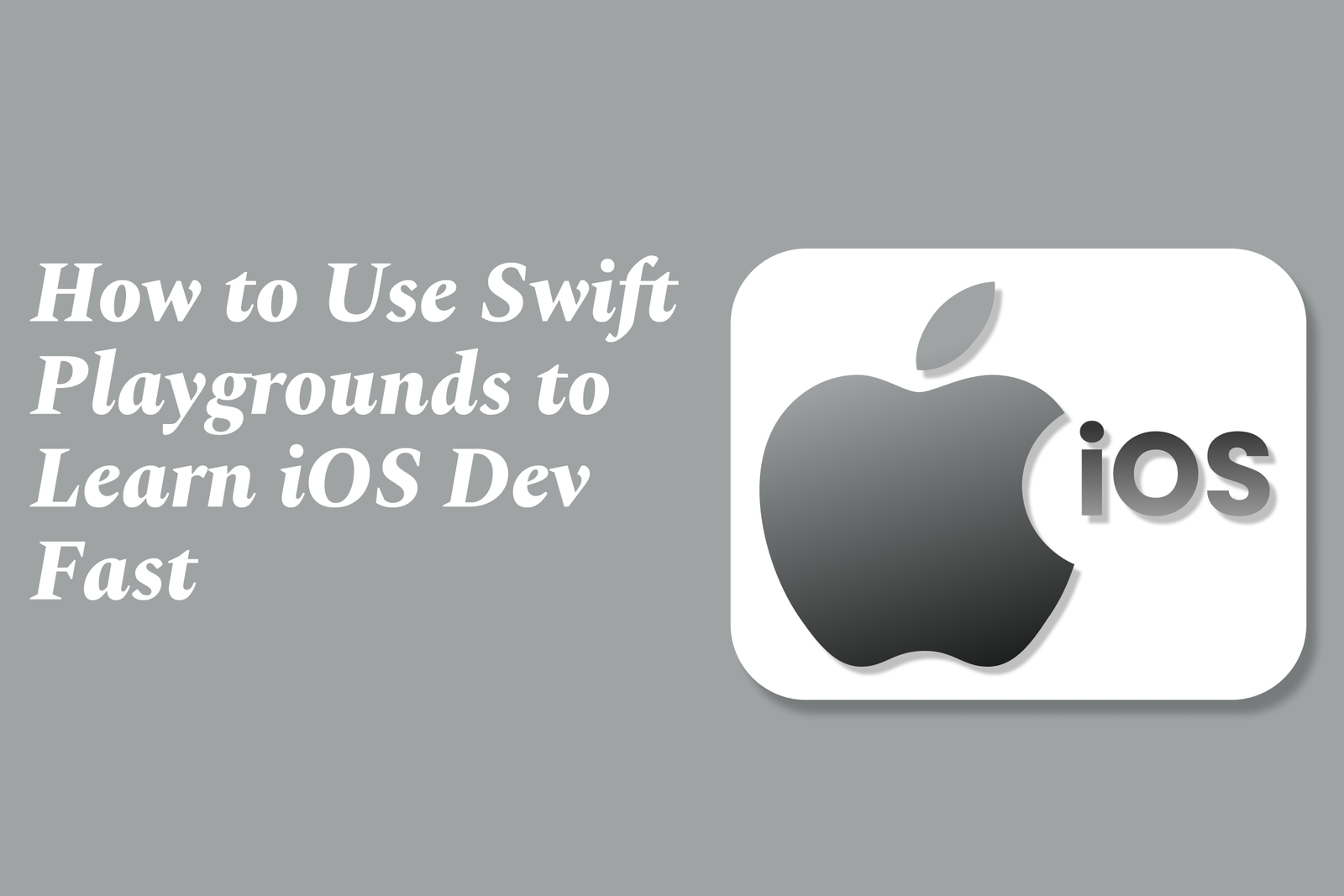How to use Swift Playgrounds to learn iOS dev fast
Swift Playgrounds is an interactive app that makes learning iOS development fast and fun by letting you write Swift code and see results instantly. It’s perfect for beginners to practice coding, experiment with ideas, and build foundational skills before moving to full app development.
How to Use Swift Playgrounds to Learn iOS Dev Fast
1 ) Set Clear Learning Goals
Be serious about why you want to learn iOS development: prototyping, mastering the platform, or building production apps.
Understand your motivation to tailor your learning approach for fast, effective progress.
2 ) Choose a Personal Project
Start with a small, meaningful app idea that solves a personal problem or interest, such as a todo list or a simple utility.
Using a personal project provides context and motivation, and helps reinforce concepts through hands on practice.
Swift Playgrounds is an ideal environment for experimentation and immediate feedback.
3 ) Master the Languages: Swift and Objective C
Learn Swift thoroughly as it is the primary language for iOS development with a modern and expressive syntax.
Also acquire a basic understanding of Objective C because much existing iOS code and frameworks use it.
Use Apple’s official resources like “The Swift Programming Language” book and Objective C guides.
Avoid third party languages and tools for iOS app development because native tools like Xcode and Swift are optimized and best supported.
4 ) Focus on Apple's Official Documentation
Use Apple’s free, comprehensive tutorials such as “Start Developing iOS Apps With Swift”.
Supplement learning with WWDC videos and official framework documentation for deeper understanding.
Refer to community sites like NSHipster and RayWenderlich for beginner friendly explanations, but prioritize Apple’s guidance to avoid conflicting or outdated practices.
5 ) Learn by Building: Stop Reading, Start Doing
After grasping core concepts like MVC architecture and UIView usage, dive straight into building your app.
Use trial and error extensively—search online (Stack Overflow, official docs) to solve practical problems.
Avoid premature optimization or adopting complex architectures (e.g., VIPER) until you have fundamentals down.
6 ) Embrace the Ecosystem and Tools
Use Swift Playgrounds for quick prototyping, experimenting, and learning syntax.
Transition to using Xcode as you build more structured apps with UI and functionalities.
Understand that learning platform frameworks will take most of your time, so focus efforts on mastering those within the native language context.
Summary
Swift Playgrounds accelerates learning iOS development by offering an interactive environment tailored for rapid experimentation. Combining this with a personal project, thorough understanding of Apple’s languages and documentation, and a strong culture of hands on building will fast track your skills toward shipping real iOS applications.
https://justacademy.in/news-detail/android-updates-for-foldable-phones
https://justacademy.in/news-detail/swiftlint-updates-for-cleaner-code-in-2025
https://justacademy.in/news-detail/flutter-india-summit-2025:-key-takeaways
https://justacademy.in/news-detail/flutter-community-meetups-in-2025
https://justacademy.in/news-detail/ai-in-flutter:-smarter-ux-and-features
Related Posts
In 2025, top Angular libraries offer modern, feature-rich components and tools for building dynamic web apps. From powerful data grids to low-code platforms like UI Bakery, these libraries enhance development speed, UI design, and scalability, making them essential for Angular developers.
Migrating from AngularJS to Angular 17 involves gradually upgrading your app by running both frameworks together using tools like ngUpgrade, rewriting components in TypeScript, and adopting Angular’s modern architecture to enhance performance, maintainability, and long-term support.
Angular state management tools help organize and handle app data efficiently, improving scalability and maintainability. Popular options include NgRx for robust, RxJS-based patterns, and newer Signal Store solutions that offer simpler, reactive approaches integrated tightly with Angular’s latest features.
RxJS in Angular empowers developers to manage asynchronous data streams with powerful operators like `forkJoin`, `combineLatest`, and `zip`. Mastering these key operators in 2025 is essential for building efficient, reactive applications that handle complex event sequences seamlessly.
Angular performance optimization in 2025 focuses on improving app speed and responsiveness by using techniques like OnPush change detection, lazy loading, efficient data caching, and AOT compilation. These practices reduce load times, enhance user experience, and ensure scalable, fast Angular applications.
In 2025, Angular remains preferred for large-scale, enterprise apps with its robust, all-in-one framework, while Vue attracts developers seeking simplicity and fast development for smaller projects. Both frameworks excel, with choice driven by project needs and team expertise.
Angular Signals are a new reactive primitive in Angular 16 that enable fine-grained, efficient change detection by automatically tracking dependencies and updating only affected parts of the UI. They simplify state management and boost app performance, revolutionizing Angular's reactivity model.
Angular interview questions to prepare in 2025 focus on core concepts like components, directives, data binding, routing, and dependency injection, along with TypeScript mastery and latest Angular features to ensure strong practical knowledge for building scalable, efficient web applications.
AngularJS reached its official end of support in January 2022, meaning no further updates or security patches. To ensure app security and performance, developers should consider migrating to modern Angular versions or seek third-party long-term support options if immediate migration isn’t possible.
The Angular Roadmap 2025 highlights upcoming features focused on improving developer experience and performance, including zoneless Angular, Signals integration, enhanced Forms, async data handling, improved HMR, and expanded Angular Material/CDK enhancements, driving modern, efficient web app development.










